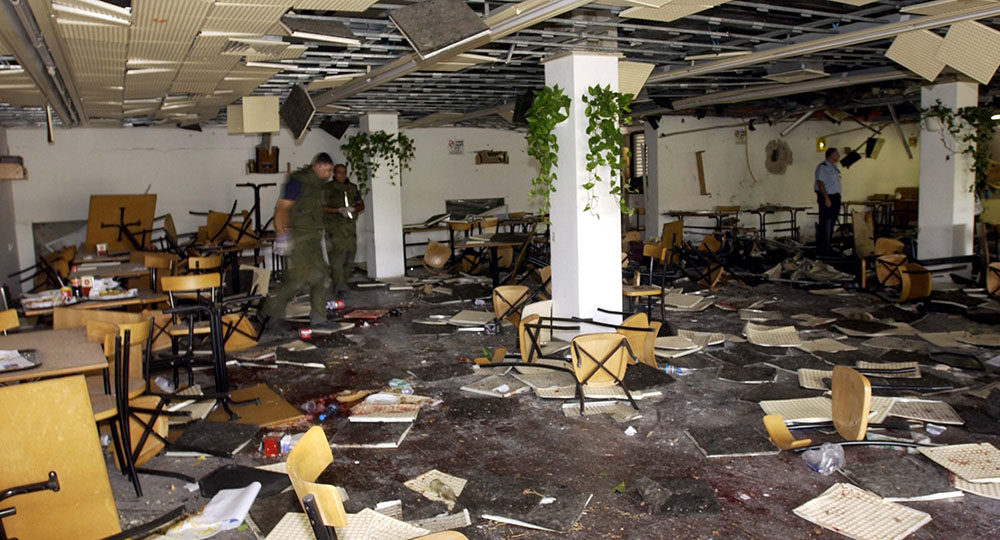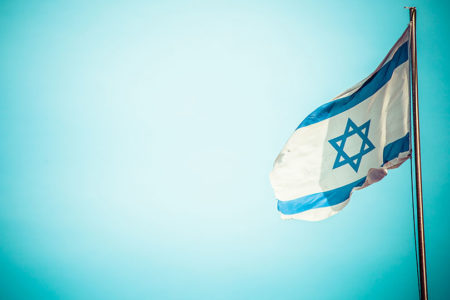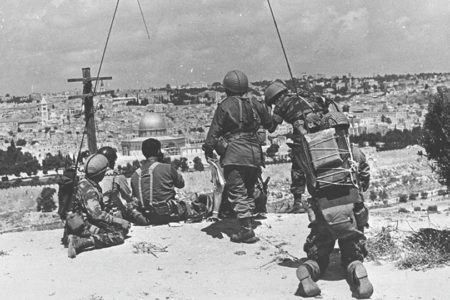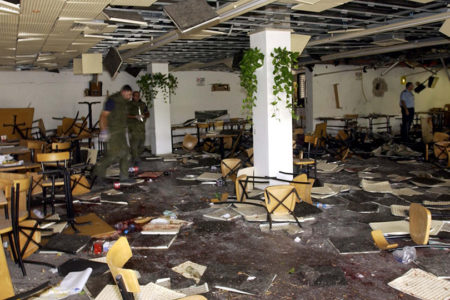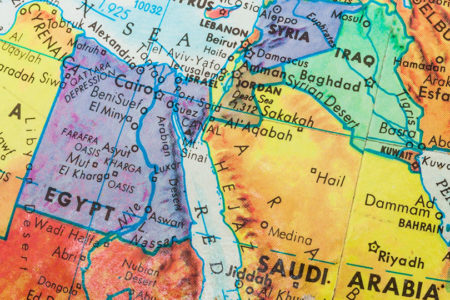The Awful Price of Terror
The latest chapter in the long and bitter Arab-Israeli conflict was less than two months old when the first major terror attack took place in Jerusalem. It would turn out to be the beginning of a torrent of suicide/homicide bomb blasts in the capital as the war of attrition rages on, with assaults in most other Israeli cities and towns. The bombings claimed more than four hundred lives during the first two years of the violent uprising and have left thousands wounded, many for life.
The two Israeli civilians savagely blown to bits in that initial Jerusalem attack in November 2000 were the daughter of National Religious Party leader Yitzhak Levy and a young Jerusalem attorney. The latter was a good friend of my friend Ron.
I was in my apartment when Ron stopped by to ask if I would help him translate a letter into English that he had written to a hotel manager—pleading with him not to close his health club because of the dearth of hotel guests. After we worked on the project awhile, I switched on the evening news. The lead story revealed that his friend was one of the terrorist victims earlier that day. I will never forget the look of intense sorrow mixed with anger that swept over Ron’s face as tears rolled down his cheeks.
Some of the dead in the ongoing terrorist war have not been Israelis at all. Chinese, Romanian, and Filipino workers are among the casualties, along with five American students and teachers who were murdered when a bomb ripped apart a cafeteria at the main Hebrew University campus in Jerusalem in July 2002.
I often hear inside details of how bomb blasts affect some of the surviving victims from my friend Diane, a Christian living in Jerusalem. The native Nebraskan with a servant’s heart has labored for many years in the Intensive Care unit of the city’s Hadassah Hospital, located in the Ein Kerem suburb, where Mary stayed with the pregnant Elizabeth in biblical times.
Among the many stirring stories Diane has shared with me is one connected to the horrendous Hebrew University attack. Sarah, a 24-year-old Israeli student, was eating lunch close to the powerful bomb that was detonated by a rigged cell phone in the center of the popular Frank Sinatra cafeteria.
As usual, the Palestinians had packed the bomb to the gills with nails and other metal objects to magnify their victims’ wounds. Sarah was inflicted with shrapnel all over her body, leaving her scarred for life. Even worse, the blast severed her spinal cord and imploded her lungs.
Doctors at Hadassah thought Sarah would not survive. Indeed, some said with deep sorrow that death might be best. But as Diane was quietly cleaning blood from one of Sarah’s wounds in the middle of the night, the young woman suddenly opened her eyes. Astonished, the American nurse asked Sarah some questions to see if she was able to hear and understand her. Even though Sarah was on a breathing machine and could not talk, she nodded her head to tell Diane she understood.
Sarah closed her eyes in relief when Diane answered the question she knew would be burning in Sarah’s mind—the condition of her mother, who was eating lunch with her when the massive explosion destroyed the cafeteria. Diane was happy to be able to tell her that her mother was in another hospital with relatively minor wounds and would be okay. What she did not tell her was that she herself would never walk again.
The Hebrew University attack gave the IC unit three other patients. One of them, a 28-year-old Israeli woman, lost an eye from a nail that spewed from the Hamas-made bomb. The nail pierced her eye and lodged in her brain. Hadassah’s skilled surgeons quickly removed the nail, and the young woman will survive with her mental abilities intact. But her missing eye will serve as a lifelong reminder of the sudden terror that interrupted her peaceful lunch at Israel’s largest center of learning.
Lee, a 34-year-old Korean student, will also never be the same again. He suffered severe burns on his face, arms, and legs. His scars, too, will serve as permanent reminders of his unexpected encounter with fanatical, Palestinian Islamic terror. Diane recalled with tears one of her most difficult moments at Hadassah Hospital. It came while treating Alex, 53, who was shot several times at close range when a terrorist burst into his home. Soon after doctors removed bullets from his head, arms, and legs, the breathing tube was removed from Alex’s throat, enabling him to talk. But the only word he uttered was his late wife’s name, repeating it over and over again. After being shot himself, he was forced to watch in horror as the hate-filled Palestinian gunned her down, along with his five-year-old daughter. Although doctors say Alex’s physical wounds will heal, his emotional scars will remain until he goes to his grave.
Diane also has shared with me some profiles in courage. Joseph, barely 19, received his critical wounds when he intercepted a suicide terrorist running toward a crowded Jerusalem city bus. Had the Arab reached his destination, he would have killed and wounded many people. Instead, Joseph tackled the terrorist after he saw him leap out of a car and head toward the bus. Joseph’s lungs and eyes were severely damaged when the Palestinian prematurely detonated the explosives wrapped around his waist.
Even as Joseph’s selfless act fades in public memory, the Israelis on the bus will never forget what Joseph did for them. And the Keeper of Israel will surely remember as well. The Lord’s justice will prevail in the end. This is the hope and expectation that many victims and their loved ones cling to as they carry on as best they can in the wake of the ongoing Palestinian terrorist onslaught.
